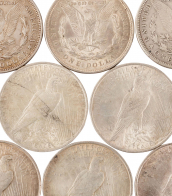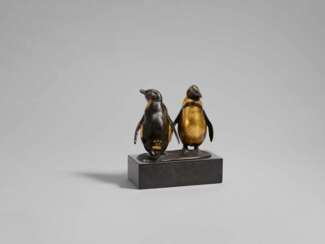neo-baroque


Giovanni Martinelli, a distinguished Italian painter from the Baroque era, was celebrated for his profound contributions to the Florentine art scene. His mastery in art was predominantly showcased in Florence, where he created a legacy through his exceptional allegorical works and religious paintings.
Martinelli's artistry was profoundly influenced by the Caravaggesque style, evident in the exceptional clarity of the protagonists' faces and the use of extraordinarily clear, cold colour tones in his paintings. His enrollment in the Accademia del Disegno in Florence in 1636 marked a significant phase in his career, leading him to explore more complex allegories and adopt darker colour tones, influenced by the works of Francesco Furini and Cesare Dandini.
His allegorical works, known for their captious symbolism, rare elegance, and refined formal nobility, stand in perfect harmony with the philosophical and moral debates of his time. These works, alongside his religious subjects and biblical stories, are charged with strong moral connotations and demonstrate Martinelli's keen interest in nature and meticulous rendering of objects.
Among his notable works are the "Feast of Balthasar" and the "Ecce Homo" housed in the Uffizi, and the "Judgement of Solomon" in the National Art Gallery in Karlsruhe, which highlight his ability to infuse his subjects with deep moral and philosophical undertones. His work, "Allegory of Painting," located in the Uffizi, is particularly celebrated for its depiction of the art of painting through the figure of a young woman, showcasing Martinelli's focus on warm light and the sensuality of female beauty.
For collectors and experts in art and antiques, Giovanni Martinelli's oeuvre offers a window into the Baroque period's complex allegories and profound religious narratives. His contributions to the Florentine art scene of the 17th century reflect a rich blend of tradition and innovation, deserving of recognition and appreciation.
To stay updated on new discoveries and auction events related to Giovanni Martinelli, consider signing up for updates. This subscription ensures that you remain informed about the latest sales and events pertaining to this influential artist's work, offering unique opportunities for collectors and enthusiasts alike.


Giovanni Paolo Pannini (Panini) was an Italian painter and architect who worked in Rome and is primarily known as one of the vedutisti. As a painter, Panini is best known for his vistas of Rome, in which he took a particular interest in the city's antiquities. Among his most famous works are his view of the interior of the Pantheon (on behalf of Francesco Algarotti), and his vedute — paintings of picture galleries containing views of Rome. Most of his works, especially those of ruins, have a fanciful and unreal embellishment characteristic of capriccio themes. In this they resemble the capricci of Marco Ricci. Panini also painted portraits, including one of Pope Benedict XIV.

.jpg)
René Magritte, a Belgian artist, was renowned for his significant contributions to the Surrealist movement. His art, known for merging ordinary objects with bizarre, dream-like contexts, captivated the art world. Born on November 21, 1898, in Lessines, Belgium, Magritte's early artistic pursuits were impressionistic, transitioning through Cubism and Futurism influenced by artists like Jean Metzinger. However, his encounter with Giorgio de Chirico's work in 1922 steered him towards Surrealism.
Magritte's career was marked by various phases, each showcasing his evolving style and thematic focus. His initial foray into Surrealism began in 1926 with "The Lost Jockey" and was further solidified during his time in Paris, where he mingled with other prominent Surrealists like André Breton. Despite facing initial criticism and financial challenges, Magritte's unique blend of familiar imagery in unfamiliar contexts, like in "The Empire of Light" and "Time Transfixed," earned him acclaim.
Magritte's distinct visual language, characterized by recurring motifs like bowler hats and apples, and his exploration of reality and illusion, remain influential. His works are displayed in major galleries worldwide, continuing to inspire and intrigue art collectors and enthusiasts.
For collectors and experts in art and antiques, staying informed about Magritte's works and related auction events is crucial. Signing up for updates ensures you're alerted to new sales and events focusing on René Magritte's art, offering unique opportunities to acquire or learn more about his remarkable creations. This subscription will exclusively cover new product sales and auction events related to Magritte, keeping you updated on the most relevant information in the art world.


Giovanni di Paolo di Grazia was an Italian painter, working primarily in Siena, becoming a prolific painter and illustrator of manuscripts, including Dante's texts. He was one of the most important painters of the 15th century Sienese School. His early works show the influence of earlier Sienese masters, but his later style was more individual, characterized by cold, harsh colours and elongated forms. His style also took on the influence of International Gothic artists such as Gentile da Fabriano. Many of his works have an unusual dreamlike atmosphere, such as the surrealistic Miracle of St. Nicholas of Tolentino painted about 1455 and now housed in the Philadelphia Museum of Art, while his last works, particularly Last Judgment, Heaven, and Hell from about 1465 and Assumption painted in 1475, both at Pinacoteca Nazionale (Siena), are grotesque treatments of their lofty subjects. Giovanni's reputation declined after his death but was revived in the 20th century.














































